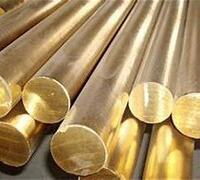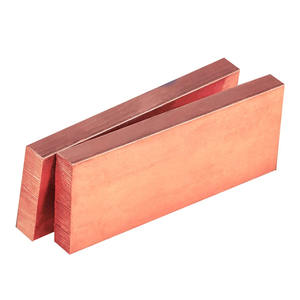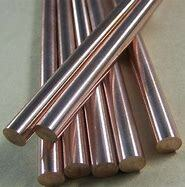1. Introduction
In the past 48 hours, global copper prices have surged amid renewed infrastructure spending announcements in the U.S. and EU, directly impacting the cost of copper rod and related products like copper bonded earthing rods and copper strip rolls. With industries from renewable energy to construction relying heavily on copper’s unmatched conductivity and corrosion resistance, understanding the full spectrum of copper-based materials—from rod copper to copper clad steel ground rods—has never been more important.

Whether you’re an electrician sourcing an earthing rod copper for a substation, a welder looking for the right copper to copper brazing rods, or a recycler seeking the best way to strip copper wire, this guide breaks down everything you need to know about copper rods and their versatile cousins in the copper family.
2. What Is a Copper Rod?
A copper rod is a solid cylindrical bar made from high-purity copper, typically used as a raw material in electrical wiring, grounding systems, and metal fabrication. Known for its excellent thermal and electrical conductivity, rod copper comes in various diameters and tempers (soft, half-hard, hard) to suit different applications.
Common types include oxygen-free copper rods for high-conductivity needs and alloyed variants like beryllium copper rods for specialized mechanical properties. The copper rod price fluctuates with LME (London Metal Exchange) rates but remains a benchmark for many downstream copper products.
3. Copper Rods in Earthing and Grounding
One of the most critical safety applications of copper rods is in earthing systems. The copper earth rod—often referred to as a ground rod copper—is driven into the soil to provide a low-resistance path for fault currents, protecting equipment and personnel.
While solid copper rods offer the best performance, cost-effective alternatives like copper bonded earthing rods and copper clad earth rods are widely used. These consist of a steel core coated with a thick layer of copper (typically 0.25mm or more), combining the strength of steel with the corrosion resistance of copper.
- Copper bonded steel rods are ideal for rocky or high-resistivity soils.
- Copper clad steel ground rods meet IEEE and IEC standards for grounding.
- Earthing rod price varies based on length (typically 2m to 3m), diameter (14mm–20mm), and copper thickness.
For large installations, engineers may also use copper strip for earthing—especially flat copper strips like the common 25x3mm size—due to their ease of installation and lower impedance over long distances.

4. Copper Rods for Joining and Fabrication
When it comes to joining copper components, specialized rods are essential. A copper brazing rod is used in high-temperature brazing processes, while copper to copper brazing rods ensure strong, conductive joints without galvanic corrosion.
Similarly, copper welding rod types—such as copper rod for welding or copper to copper welding rod—are formulated for specific base metals and welding methods. Note that pure copper is rarely welded directly due to its high thermal conductivity; instead, alloys like silicon bronze or phosphor bronze are often used with a welding rod copper designation for compatibility.
Key considerations include:
- Matching the filler metal to the base copper alloy.
- Using proper flux for copper rod welding to prevent oxidation.
- Ensuring adequate preheating to avoid cracking.
5. Copper Strips and Flat Products
Beyond rods, flat copper products like copper strip, copper metal strips, and copper beryllium strip serve vital roles in electronics, busbars, and shielding. Available in rolls or cut lengths, these include thin copper strips (e.g., 1mm copper strip), nickel plated copper strip for enhanced solderability, and flexible copper bus bar for dynamic electrical connections.
Recyclers often deal with stripping copper wire for scrap, and the best way to strip copper cable efficiently includes mechanical strippers or automated machines—never burning copper wire for scrap, as it releases toxic fumes and degrades value.
Popular variants:

- Copper strip roll for continuous feeding in manufacturing.
- Copper edging strip for architectural detailing.
- Copper roof strip for weatherproofing and aesthetics.
- Copper strip near me searches spike during DIY and renovation seasons.
Copper strip price depends on width, thickness, temper, and whether it’s bare, tinned, or alloyed (e.g., beryllium copper strip for springs).
6. Copper Pipes and Tubing in HVAC and Plumbing
Though not rods, copper pipework is closely related in composition and application. Air conditioning copper pipe—also called aircon copper tube or ac copper pipe—is essential in refrigerant lines due to its durability and thermal performance.
Common sizes include 15mm copper pipe, 22mm copper tube, and 3/4 copper tubing. Proper copper pipe soldering requires clean surfaces, flux, and lead-free solder, while bending copper pipe avoids unnecessary joints.
Pricing factors:
- Type (L, M, or K wall thickness).
- Diameter (e.g., 1/2 copper pipe vs. 1 1/2 copper tubing).
- Market rates reflected in ac copper pipe price and copper tube price listings.
While PEX plumbing pipes are gaining popularity for water lines, copper remains the gold standard for reliability in high-pressure and high-temperature systems.
7. Copper Bars and Ingots
For high-current applications like switchgear and transformers, copper bus bar and copper flat bar are preferred. Flexible copper bar versions accommodate thermal expansion, while cu bars in ingot form (copper ingot price tracked globally) feed foundries and rod mills.
Copper bars for sale range from standard round bar copper to custom extrusions. The 1oz copper price is more relevant to investors, but industrial buyers focus on per-kilogram or per-meter rates for copper round bar and copper bar top products.
8. Conclusion
From the humble copper rod to advanced copper clad steel earth rods and precision copper strip rolls, copper’s versatility makes it indispensable across modern industries. Whether you’re grounding a facility, welding copper components, stripping wire for recycling, or installing aircon copper pipe, choosing the right copper product ensures performance, safety, and cost-efficiency. As copper prices remain volatile, staying informed about material options—like copper bonded vs. solid copper—helps professionals make smarter, future-proof decisions.
Our Website founded on October 17, 2012, is a high-tech enterprise committed to the research and development, production, processing, sales and technical services of ceramic relative materials such as Copper. Our products includes but not limited to Boron Carbide Ceramic Products, Boron Nitride Ceramic Products, Silicon Carbide Ceramic Products, Silicon Nitride Ceramic Products, Zirconium Dioxide Ceramic Products, etc. If you are interested, please feel free to contact us.

